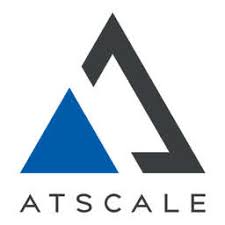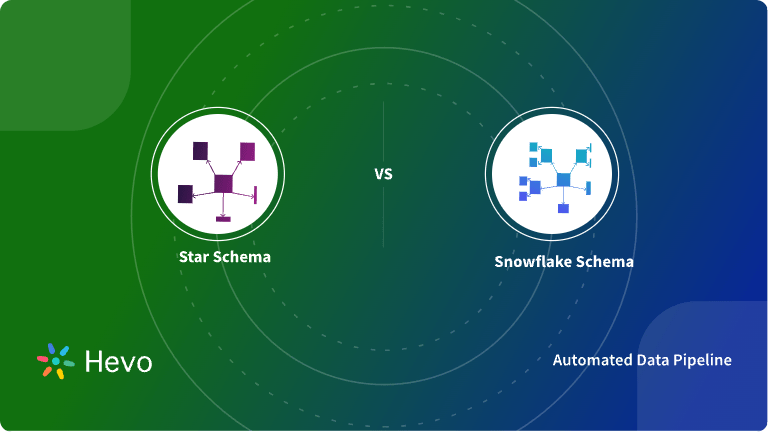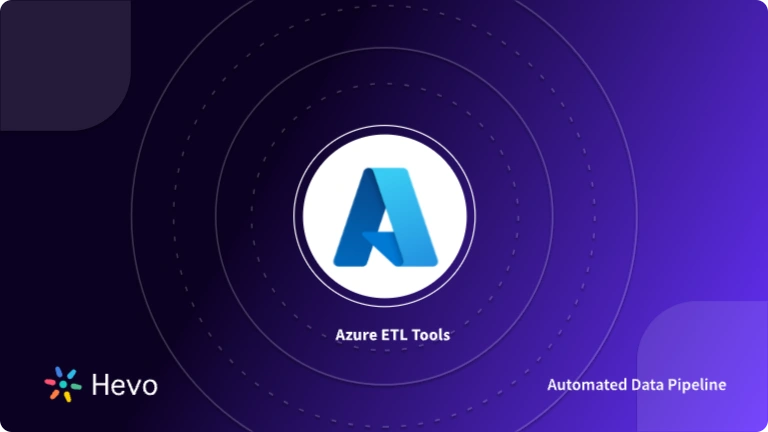 Key Takeaways
Key TakeawaysHere are the top 6 Azure-native data ingestion tools:
1. Hevo Data – No-code, fully managed pipelines with real-time sync, auto schema mapping, and built-in transformations.
2. Denodo – High-performance data virtualization with AI-powered catalog and live ingestion from 150+ sources.
3. Informatica – Enterprise-grade, metadata-driven pipelines with AI/ML-powered CLAIRE engine for augmented data ingestion.
4. AtScale – BI-focused virtualization that delivers live data models, automatic lineage, and instant query acceleration.
5. Data Virtuality – Two-mode (self-service or managed) ETL plus virtualization for 200+ sources with unified replication.
6. Red Hat – Customizable UDF-based pipelines with built-in metadata enrichment, anonymization, and enterprise security.
Managing vast data volumes is a necessity for organizations in the current data-driven economy. To accommodate lengthy processes on such data, companies turn toward Data Pipelines which tend to automate the work of extracting data, transforming it and storing it in the desired location. In the working of such pipelines, Data Ingestion acts as the primary step.
Companies also require a fully-managed communication platform to process their ever-increasing data. Microsoft Azure is one such popular tool that provides businesses with a powerful messaging system, allowing developers to build reliable interactions between various application modules. Businesses today seek Data Pipelines that can offer high-speed Data Ingestion and can integrate with Microsoft Azure.
This article will introduce you to Data Ingestion and Microsoft Azure along with their key features. It will further discuss the 6 best Data Ingestion Tools in Azure that can fulfill your data needs. Read along to decide which Data ingestion pipeline suits you best and learn the limitations of the Data Ingestion process.
Table of Contents
What is Data Ingestion?

The idea of Data Ingestion is built on moving data, including both structured & unstructured data, from its primary source to the desired storage destination. Companies often rely on this process while gathering information from a rich collection of data sources and storing it in a Cloud or on-premise repository for analysis. The process of Data Ingestion marks the beginning of any Data Pipeline’s functioning. You can perform this Data Ingestion according to your requirements either in the form of batches or as real-time streams.
Data Ingestion also acts as the initial step in the larger scheme of gathering data stored in multiple sources and transporting it to a Data Processing system. Businesses deploy Data Ingestion tools to recognize data sources, authenticate files and send datasets to the correct destination. You can use these tools either by creating an in-house structure from scratch or by leveraging 3rd party pipelines for Data Ingestion.
Key Features of Data Ingestion
Data Ingestion is a major aspect of Data-driven organizations due to the following features:
- Data Ingestion tools work to extract data from a vast variety of data sources seamlessly. Moreover, they contain protocols to provide you with secure and rapid data transportation.
- Data Ingestion also supports Data Visualization. This allows you to work with straightforward drag & drop features to visualize evenly newly ingested datasets.
- Data Ingestion tools can easily accommodate data scalability. This allows companies to work with huge datasets and extract simultaneously and even add extra nodes to facilitate parallelization.
- Data Ingestion is not constrained by a certain data source and good Data ingestion tools allow you to extract data from a variety of Cloud or on-premise sources. Furthermore, such tools can maintain their performance standards even if you change the data sources. This prevents you from making manual adjustments to Data ingestion pipelines and allows you to work on other aspects of your business.
With Hevo, you can seamlessly integrate data from multiple sources into any destination we support azure sources and Azure Synapse as Destination, ensuring your organization has a unified view of its data assets.
Why Use Hevo for Data Warehouse Integration?
- No-Code Platform: With Hevo’s user-friendly interface, you can easily set up and manage your data pipeline without any technical expertise.
- Broad Source and Destination Support: Connect to over 150+ sources, including databases, SaaS applications, and more, and load data into your preferred data warehouse.
- Real-Time Data Sync: Keep your data warehouse up-to-date with real-time data flow, ensuring your analytics are always based on the latest information.
Introduction to Microsoft Azure
Microsoft Azure is an online Microsoft service that works to ensure that you have scalable storage that processes data with high computing power. According to your business requirements, you can utilize this tool in multiple forms such as Platform as a Service (Paas), Infrastructure as a Service (IaaS), and Software as a Service (SaaS). In the current market scenario, almost 80% of companies listed under the Fortune 500 tag, rely on Microsoft Azure to manage their business’s Cloud data. The main reason for this huge demand for Azure is the highly secure environment that it offers and it’s accessible data backups that can withstand any unexpected server crash.
Developers can leverage any of the 3 forms of Azure and work on building powerful applications. Another use case of this tool lies in hosting existing applications on Cloud using Azure’s public domain. Furthermore, you can create VMs (Virtual Machines) and new databases to facilitate your business growth using Microsoft Azure services.
Key Features of Microsoft Azure
You can enhance your Data Management by utilizing the following features of Microsoft Azure:
- Analytics Support: Azure hosts in-built tools which can provide you with high-speed Data Analysis and Reporting. You can also depend on these tools for extracting quality insights from your vast set of business data. Such insights ultimately empower your search for new leads, optimize customer service, and boost data-driven decisions.
- Hybrid Ready: Azure offers its services in both on-premises and Cloud-based facilities. This allows you to pick your preferred option to deploy your business data-related operations. Furthermore, you can also get the best of both worlds by opting for the Hybrid model.
- Efficient Storage System: Azure storage relies on markings based on delivery points and data centers. This way, you can operate on rapid data delivery without losing track of your vast data sets. This can simplify your management tasks and enhance your user experience.
To learn more about Microsoft Azure, click here.
Top 6 Data Ingestion Tools in Azure
Zeroing on a Data Ingestion tool that can cater to your Data Team’s needs can be a confusing and troublesome task, especially when the market is brimming with tools offering different functionalities. To simplify your quest, here is a list of the 6 best Data Ingestion Tools in Azure for you to choose from and easily intake data from all the major data sources:
1. Hevo Data
Hevo Data, a No-code Data Pipeline helps to load data from any data source such as MySQL, SaaS applications, Cloud Storage, SDK,s, and Streaming Services and simplifies the ETL process. It supports 150+ data sources and loads the data onto the desired Data Warehouse, enriches the data, and transforms it into an analysis-ready form without writing a single line of code.
Its completely automated pipeline offers data to be delivered in real-time without any loss from source to destination. Its fault-tolerant and scalable architecture ensure that the data is handled in a secure, consistent manner with zero data loss and supports different forms of data.
Check out why Hevo is the Best:
- Secure: Hevo has a fault-tolerant architecture that ensures that the data is handled in a secure, consistent manner with zero data loss.
- Schema Management: Hevo takes away the tedious task of schema management & automatically detects the schema of incoming data and maps it to the destination schema.
- Minimal Learning: Hevo, with its simple and interactive UI, is extremely simple for new customers to work on and perform operations.
- Hevo Is Built To Scale: As the number of sources and the volume of your data grows, Hevo scales horizontally, handling millions of records per minute with very little latency.
- Incremental Data Load: Hevo allows the transfer of data that has been modified in real-time. This ensures efficient utilization of bandwidth on both ends.
- Live Support: The Hevo team is available round the clock to extend exceptional support to its customers through chat, email, and support calls.
- Live Monitoring: Hevo allows you to monitor the data flow and check where your data is at a particular point in time.
Learn more about Azure ETL tools in our blog
2. Denodo
Denodo, founded in Palo Alto (1999) is a popular name in the Data Ingestion & Virtualization market. This tool works to provide you with high-performance Data Ingestion, Integration and Abstraction. Moreover, Denodo can intake data from a variety of sources including Big Data Sources, Enterprises, Cloud Platforms, and even Unstructured Data Services. It also ensures that you have access to integrated business data useful for Business Intelligence tools, Data Analytics tools, etc.
Using its intuitive web-based user interface and an AI-based Data Design Studio, Denodo allows users to ingest data from more than 150 sources in real-time. Furthermore, companies seeking Data Management tools can leverage Denodo’s Machine Learning Data Catalog to enhance their Data Ingestion & Integration tasks.
3. Informatica
Informatica offers Data Ingestion and Integration tools on-premise and even as Cloud Deployments for multiple enterprise business needs. This tool unifies advanced level integrations, self-service functionality and business access for different analytical functions. Furthermore, Informatica allows you to perform Augmented Integration using its CLAIRE Engine. The Claire Engine is a metadata-driven Artificial Intelligence based engine that works on Mchine Learning. This feature allows Informatica to provide you with strong interoperability for Data Management Products.
4. Atscale

AtScale is a prominent Data Virtualization platform that offers a high scale Data ingestion facility. It provides you with the option to connect live Data Sources to its BI features directly. Moreover, this platform facilitates multi-level measures, time-based calculations, semi-additive metrics, and various many-to-many relationships while managing incoming data. AtScale also provides you with automatic Data Lineage and has an auto-optimized response functionality to manage queries.
AtScale works to offer you easy access to data, and provide centralized data governance and consistency. This platform supports Machine Learning based Data Pipelines which cater to your business needs of high flexibility, and stability. Using AtScale, you can share AI-generated insights with a huge audience in real-time.
5. Data Virtuality

Data Virtuality operates on any database using ETL processes coupled with Data Visualization. This platform accesses and integrates databases with its Data Pipeline solutions which come in 2 iterations namely, Self-service and Managed. Moreover, this Data Ingestion tool allows users to infer and model data from all types of databases using APIs & Data Analysis tools. This platform caters to 200+ Data Sources and provides robust Data Replication features for different use cases.
6. Red Hat

Red Hat provides a Data Ingestion & Integration solution that can work with multiple data sources to collect their data and form a single source of truth for companies. It then delivers the data in a format useful to its user companies seamlessly. Since Red Hat operates on a blueprint that utilises user-defined functions for operations like Metadata Enrichment, Data Anonymization, Tagging, etc, its Data Ingestion functionality can be useful for numerous industries in different verticals.
Limitations of Data Ingestion
Data Ingestion is a primary task of any functional Data Pipeline and allows data professionals to initiate Data Transformations. The previous section discussed the popular Data Ingestion Tools is Azure and you can now choose the tool which is most favourable to your work. However, there are certain following limitations associated with Data Ingestion:
- Creating it from scratch or even modifying a working Data Ingestion Pipeline requires a significant amount of time, resources and money based investments. Furthermore, applying architectural changes to the ingestion process whenever there is a new data source, degrades the speed & work rate of all your teams that rely on incoming pipeline data.
- A Data Engineer requires 10-15 hours to implement changes to a functioning Data Pipeline. Most of this time is devoted to carrying the maintenance part and only 10% of the invested time is utilized for ingestion. This uneven distribution of time and effort makes the work of running Data Ingestion Tools in Azure, a tough nut to crack.
- Your Data Teams need to implement the same steps again & again while working with Data Ingestion Tools in Azure. Moreover, working with Data Ingestion involves heavy troubleshooting & regular debugging. These bottlenecks prevent Data engineers from innovating the Data Ingestion technology and creating faster methods to intake data.
Check out our ETL tutorial on Azure Data Factory to get started.
Conclusion
This article introduced you to Data Ingestion and Microsoft Azure with their key features. It also explained the 6 best Data Ingestion Tools in Azure that allow you to work with Microsoft Azure in a hassle-free way. Furthermore, the article mentioned the limitations that you may face while using Data Ingestion for your business.
Hevo Data is one of the most popular Data Ingestion Tools in Azure. It is a no-code, cloud-based platform built for ELT platforms (extract, transform, and load). It supports data loading from any source into the Data Warehouse of your choice in real-time. Hevo is a fully managed data pipeline solution that provides ten times faster reporting and analysis. The platform is great for companies as it requires zero maintenance, is easy to set up, and can support 150+ integrations across cloud storage, streaming services, databases, and more. Also, you do not require to write custom configuration as it is a fully automated platform. We are happy to announce that Hevo has launched Azure Synapse as a destination.
FAQ
Which tool is used for data ingestion?
Common tools for data ingestion include Apache Kafka, Apache NiFi, Talend, and Hevo Data, which facilitate the automated and real-time transfer of data from various sources to a destination system.
What is Azure data ingestion?
Azure data ingestion refers to the process of collecting and importing data into Azure services like Azure Data Lake, Azure Blob Storage, or Azure SQL Database, typically using Azure Data Factory, Event Hubs, or Logic Apps.
Which ETL tool is used in Azure?
Azure Data Factory is the primary ETL tool in Azure, used for data integration, transformation, and orchestration between various cloud and on-premises data sources.









